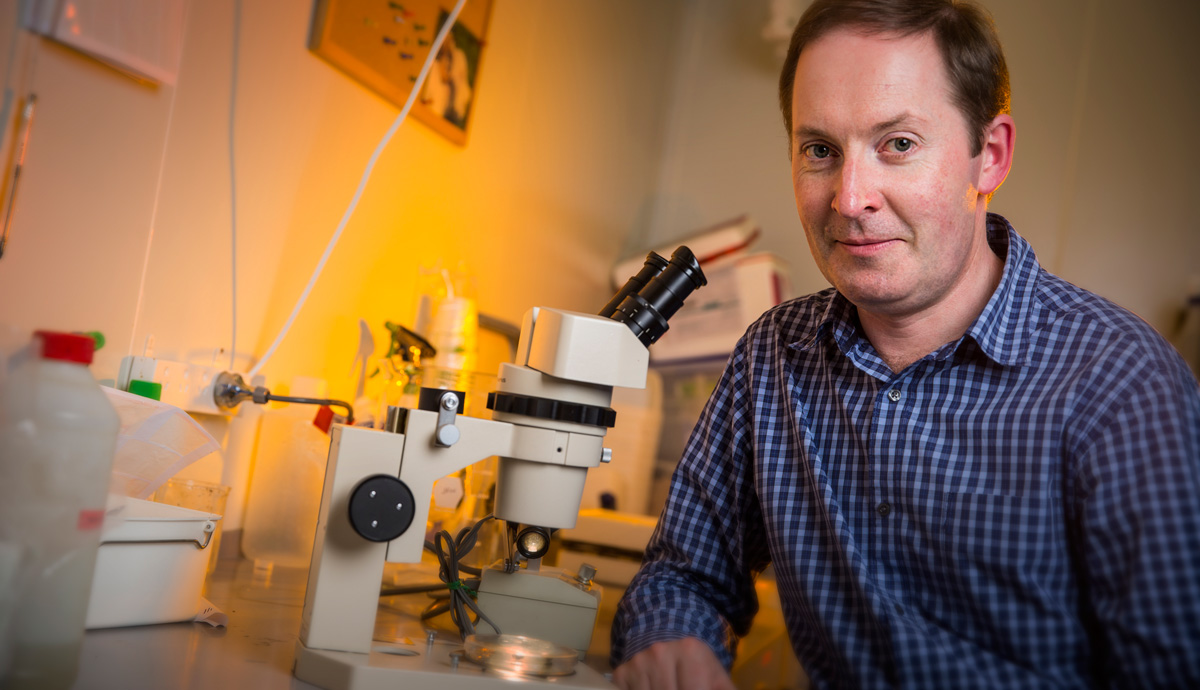July 24, 2015
Tiny insects make huge contribution to understanding science
A one-hour TV documentary featuring a UOW biologist and the much-maligned spoiler of the Australian summer, the fly, is a finalist in this year’s Australian Museum Eureka Prizes.
Part social history, part scientific study, the documentary ‘The Great Australian Fly’, showed how the tiny and misunderstood insects are confounding our scientists, influencing our lifestyle and defining the way we speak.
It has been nominated as a Eureka Prize finalist in the category of Best Science Journalism. The Eureka Prize was established in 1990 to reward outstanding achievements in Australian science and science communication and are the country’s most comprehensive national science awards.
The winners of 16 prizes in four categories - Research & Innovation, Leadership, Science Communication & Journalism and School Science - will be announced at an award dinner on 26 August.
The 2014 winner of the Science Journalism category was Sonya Pemberton, whose documentary ‘Jabbed—Love, Fear and Vaccines’ investigated the sources of community confusion about vaccines and examined the medical risks, the science of vaccination, and the real cost of ‘opting out’.
‘The Great Australian Fly’, broadcast earlier this year on ABC, introduced the people who devote their lives to flies through science, criminology, medicine, as breeders and for love. And it explained why we might need to stop swatting and start embracing the fly, which looms large in our past, our present and our future.
 "The film has been a fantastic way of opening the eyes of people to the intricate world of the fly and other insects and how important they are in our daily life, rather than being seen as simply a nuisance." - Associate Professor James Wallman.
"The film has been a fantastic way of opening the eyes of people to the intricate world of the fly and other insects and how important they are in our daily life, rather than being seen as simply a nuisance." - Associate Professor James Wallman.
Central to explaining fly science was Associate Professor James Wallman, from UOW’s School of Biological Sciences, who has been lifting the covers on the secret sex lives of flies.
Professor Wallman has studied insects for more than 25 years and uses the insects to aid missing persons and homicide investigations, including assessing the time of the victim’s death.
“I’m excited to see the documentary recognised in this way,” Professor Wallman said. “Who would have imagined that the humble fly could have caused such a buzz among the Australian public. The film has been a fantastic way of opening the eyes of people to the intricate world of the fly and other insects and how important they are in our daily life, rather than being seen as simply a nuisance.
"It’s a credit to the filmmakers Tosca Looby and Sally Ingleton for taking on this project and producing such a wonderful film.”
Directed by Tosca Looby and produced by Sally Ingleton, the amusing and intriguing film paid homage to the tiny invertebrate and the influence it has had on our world.
“Most people don’t know anything about flies, they see them buzzing around and the first thing they think is how do I get rid of them?” Ingleton said. “I think there is also a fear of flies – they are seen to be dirty and to spread disease – and I thought it would be interesting to explore the subject.
“Are flies really as bad as people believe? We decided to tell a chronological history story, woven through with stories of the people who work with flies; who study them, draw them, catch them and breed them.”
The flies are central to the film and director Tosca Looby along with cinematographers Peter Nearhos and Peter Coleman, used the latest high-speed photography - up to 200 frames per second technology - to capture them in all their glory.
:format(jpg)/prod01/channel_3/assets/live-migration/www/images/content/groups/public/web/media/documents/mm/uow199333.jpg)